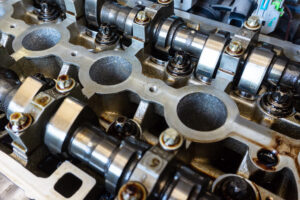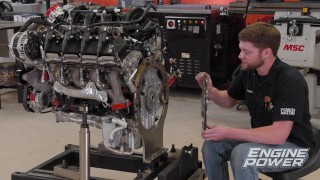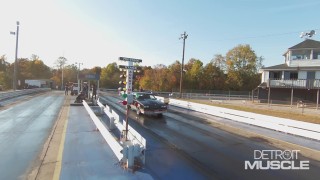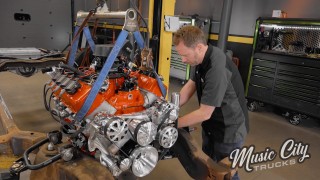Where To Start When Adding Power To An Engine
Who doesn’t love more power? But when it comes to adding that extra power, you may not always know where to start. In today’s aftermarket, there are a lot of different choices out there. Here are some choices we like to use here and the shop from Edelbrock, how they can help and what they do.
First up, the intake manifold. It’s the first place air travels after moving through the carburetor or throttle body. There are 2 basic parts: the plenum, a common chamber, and the runner, the pathway the air takes to get to the individual ports on the cylinder head. Truck Tech host LT is featuring an RPM Air-Gap intake where the runners have a larger cross-sectional area than a stop manifold so it can move more air, which means more horsepower. Just as important is the length, which determines the RPM range that the engine can best operate at. The runners on the Air-Gap are slightly longer which means it will favor low to mid-RPM torque. This manifold’s operating range is between 1,500 and 6,500 RPM which is best used on street engines.
The Super Victor is different with its large plenum and short runners. It’s designed to be on a large cubic-inch engine that is almost always at high RPMs. Its operating range is between 3,500 and 8,500 RPMS so you’ll find those at the track.
The next stop as airs path through the engine is the cylinder head which is usually the most restrictive part of the induction setup on factory engines. By swapping to an upgraded set like Edelbrock’s Performer RPMs you can get massive increases in power, sometimes upwards of 100+ HP. The size of the runner has been increased to let more air through and the transition as the air bends around the valve has been improved as well. The valves are usually larger and the combustion chamber sizes have been made smaller which increases compression ratio and horsepower. To top it off, they’re made with aluminum rather than iron which dissipates heat better and leaves you with a cooler running engine.
Another option is to force more air into the engine with something like the E-Force Supercharger. It bolts onto the cylinder head and the belt from the crankshaft turns it. It sucks in air from the atmosphere and forces it into the engine forcing more air and fuel into the engine that it would normally have on its own.
Of course, these are just the very basics. There are several options and you can combine upgrades to get the power you’re looking for!









